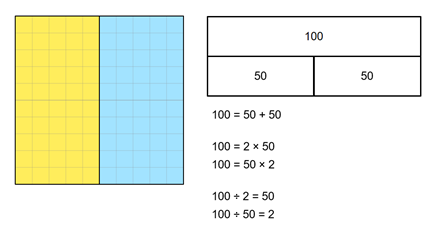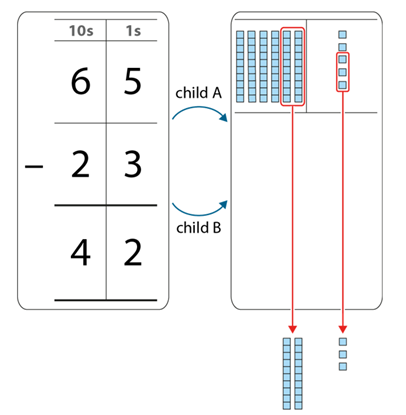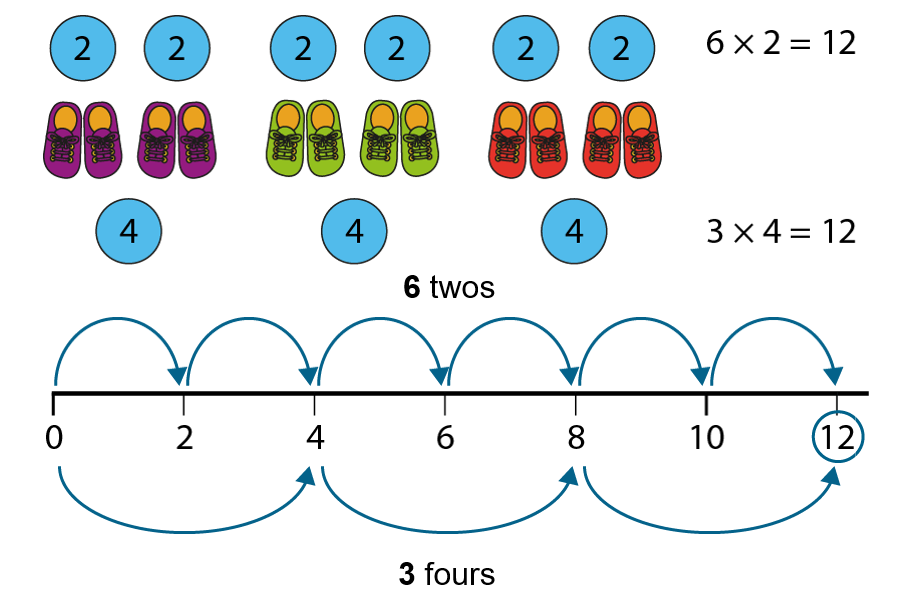Year 3 is the first year in Key Stage 2. However, we continue to follow a teaching for mastery curriculum and build on the concepts from the EYFS and KS1. Year 3 continue to use the NCETM PD materials to cover the objectives. The Spine materials are spilt into the three same areas as KS1. Following a mastery curriculum means we take small steps and ensure all our children are with us on the same journey through the concepts. If a child shows fluency, reasoning and problem solving in a concept, they will be challenged by ‘going deeper’. Our aim is to teach all the children the same objective but at times this won’t be appropriate so children will receive intervention and extra support either from the adults in the classroom or resources. At Prince Edward, we don’t want to leave any child behind.
Spine 1: Number, Addition and Subtraction
YEAR 3
Composition and calculation: 100 and bridging 100
Children will be taugh that there are ten tens in 100; there are 100 ones in 100. 100 can also be composed multiplicatively from 50, 25 or 20, units that are commonly used in graphing and measures. They will learn that addition facts can be used to calculate complements to 100. Children will develop known strategies for addition and subtraction across the tens boundary can be combined with unitising to count and calculate across the hundreds boundary in multiples of ten.

Composition and calculation: three-digit numbers
Children will explore the composition of three-digit numbers; use place-value and partitioning knowledge to support additive calculation, and extend known additive strategies to three-digit numbers.

Securing mental strategies: calculation up to 999
Children will be equipped with useful calculation strategies for bridging hundreds boundaries, and three-digit numbers; continue to use the partitioning structure to facilitate calculation.

Algorithms: column addition
Children will be introduce to the column algorithm for addition calculations, applying the algorithm to a variety of aggregation and augmentation contexts for two-digit and three-digit numbers; explore regrouping (column total is ten or greater) in detail.

Algorithms: column subtraction
Children will be introduced to the column algorithm for subtraction calculations, applying the algorithm to a variety of partitioning, reduction and difference contexts for two-digit and three-digit numbers; explore exchange (insufficient quantity to subtract from in a column) in detail.

Spine 2: Multiplication and Division
Multiplication facts: 2, 4 and & the relationship between them
Children will build up the four/eight multiplication tables; using different structures/interpretations of multiplication and division, solve problems related to these tables; explore connections between the two, four and eight times tables.




Multiplication facts: 3, 6 and 9, and the relationship between them
Children will build up the three/six/nine multiplication tables; using different structures/interpretations of multiplication and division, solve problems related to these tables; explore connections between the three, six and nine times tables.



Multiplication facts: 7 and patterns within/across multiplication tables
Children will build up the seven times table and solve associated multiplication and division problems; explore times table patterns including generalising about the product in terms of odd/even factors, reviewing divisibility rules, and exploring square numbers.


Spine 3: Fractions
Coming soon!